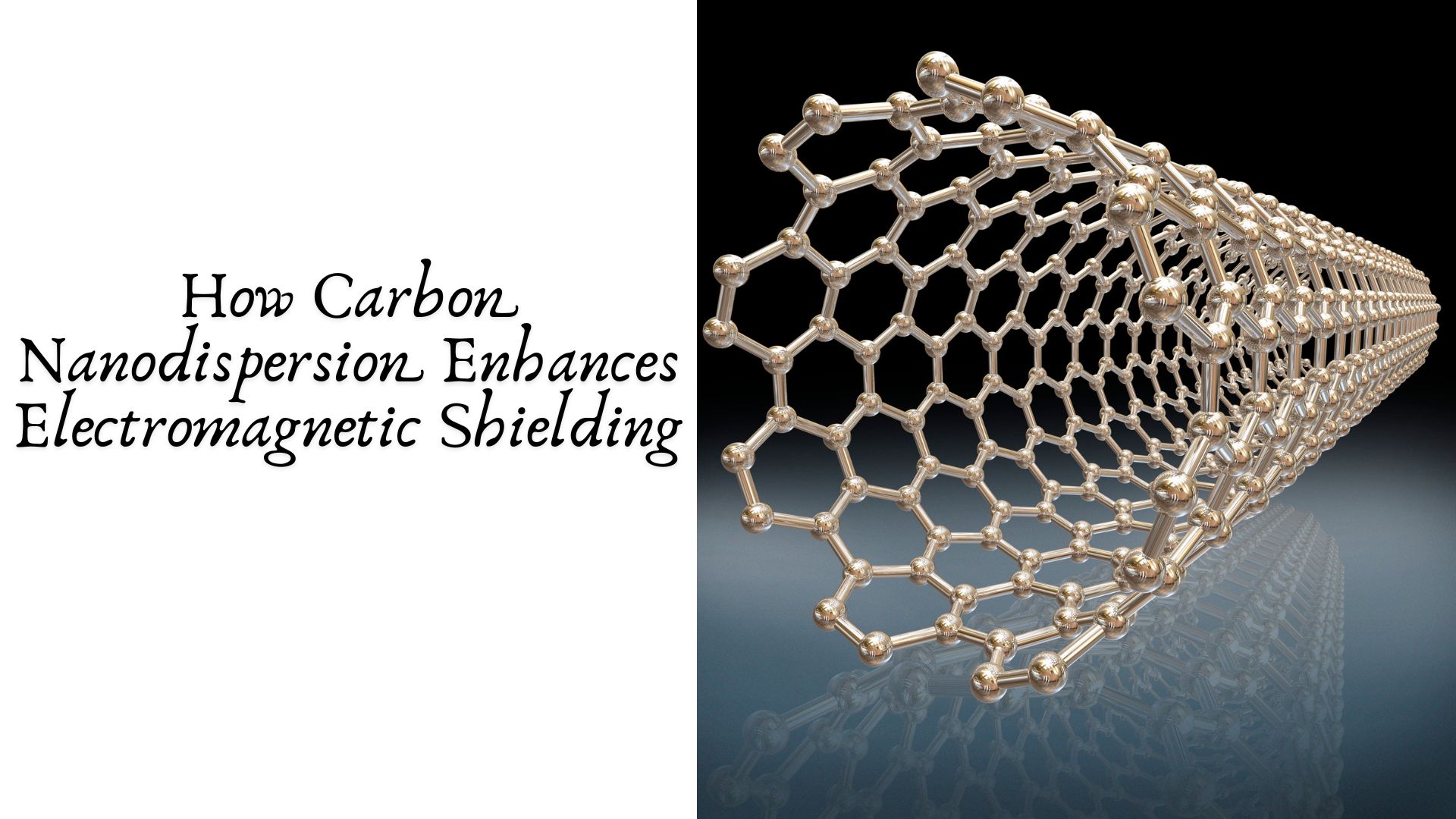Electromagnetic interference (EMI) has emerged as a major concern in the age of digital and wireless technology. From smartphones to satellites, electronic devices must be shielded from electromagnetic radiation to maintain functionality and data integrity. One of the most promising developments in EMI shielding is the application of carbon nanodispersion—a cutting-edge material science technique that significantly boosts shielding performance. This article explores how carbon nanodispersion enhances electromagnetic shielding, its advantages over traditional materials, and its growing importance across industries.
Understanding Electromagnetic Shielding
Electromagnetic shielding is the process of blocking electromagnetic fields using conductive or magnetic materials. This protection is vital in sensitive electronic environments such as:
- Telecommunications
- Aerospace and defense
- Medical imaging systems (e.g., MRI)
- Automotive electronics
- Consumer gadgets
The effectiveness of shielding materials is measured by their Shielding Effectiveness (SE) in decibels (dB), which indicates how well they attenuate electromagnetic waves. Conventional materials like copper and aluminum provide good conductivity but are often heavy, prone to corrosion, and difficult to integrate into flexible systems.
Introduction to Carbon Nanodispersion
Carbon nanodispersion refers to the homogeneous distribution of carbon-based nanomaterials—such as carbon nanotubes (CNTs), graphene, and carbon black—within a host matrix (usually a polymer, resin, or metal). These nano-reinforcements exhibit remarkable electrical, mechanical, and thermal properties due to their high aspect ratio, lightweight nature, and intrinsic conductivity.
The dispersion process ensures these nanomaterials form a well-connected network, which is crucial for their performance in electromagnetic shielding.
Key Mechanisms of EMI Shielding Using Carbon Nanodispersion
Carbon nanomaterials dispersed in a matrix can shield electromagnetic radiation through three primary mechanisms:
- Reflection: Due to high electrical conductivity, carbon nanomaterials reflect incident electromagnetic waves at the surface.
- Absorption: The dielectric and magnetic losses of carbon nanostructures enable them to absorb EM energy and convert it into heat.
- Multiple Internal Reflections: The unique geometry of dispersed nanomaterials allows EM waves to bounce within the material, enhancing attenuation.
Advantages of Carbon Nanodispersion for EMI Shielding
Lightweight and Flexible
Unlike traditional metal shields, carbon-based composites are extremely lightweight. This makes them ideal for aerospace, automotive, and wearable electronics where weight is critical.
Superior Conductivity at Lower Loadings
Because of their high aspect ratio and percolation efficiency, even a small amount of carbon nanomaterial can significantly enhance the composite’s conductivity and shielding performance.
Thermal Stability
Carbon nanomaterials exhibit high thermal resistance, allowing them to maintain shielding performance in extreme conditions.
Corrosion Resistance
Carbon nanodispersion in polymers or coatings eliminates the corrosion issues associated with metal shields, making them more durable and maintenance-free.
Processability
Dispersed carbon materials can be molded, sprayed, or printed onto a wide range of surfaces and geometries, enabling easy integration into complex device architectures.
Applications Across Industries
Electronics and Consumer Devices
Carbon nanodispersion is increasingly used in smartphones, tablets, and laptops to prevent signal interference while allowing thinner, more compact designs.
Aerospace and Defense
Aircraft and satellite systems benefit from lightweight shielding materials that don’t compromise structural integrity. Carbon nanocomposites can also offer radar absorption capabilities.
Automotive
Modern vehicles are equipped with sensitive electronic control units (ECUs), infotainment systems, and advanced driver-assistance systems (ADAS). Carbon nanodispersed materials provide robust shielding without adding bulk.
Medical Equipment
High-resolution imaging systems like MRI require stringent EMI control. Carbon-based shielding materials are being used in device housings and cables to maintain image fidelity and patient safety.
Wearable and Flexible Electronics
With the rise of IoT and flexible devices, carbon nanodispersions offer conductive and shielding properties that are both stretchable and durable—unlike rigid metal enclosures.
Recent Advances in Research and Development
Researchers are exploring innovative combinations of carbon nanomaterials with other functional additives (e.g., magnetic nanoparticles, metal flakes) to enhance both shielding and mechanical properties. Techniques such as electrospinning, solution blending, and in-situ polymerization are improving dispersion quality, ensuring better network formation and efficiency.
Moreover, advancements in surface functionalization of carbon nanomaterials allow them to bond more effectively with different matrices, leading to superior dispersion, increased interface interaction, and enhanced shielding behavior.
Environmental and Economic Considerations
Carbon nanodispersion can reduce reliance on expensive and environmentally damaging metals like silver or copper. Furthermore, their lightweight and processability reduce transport and production energy costs. With increasing availability and scalability of nanocarbon production, the economic viability of these materials is steadily improving.
Challenges and Future Outlook
Despite its promise, carbon nanodispersion for EMI shielding faces certain challenges:
- Achieving uniform dispersion at scale remains difficult and can impact material consistency.
- The high cost of certain nanomaterials, particularly pristine graphene or CNTs, is still a barrier.
- Regulatory concerns regarding nanomaterial toxicity and environmental impact are emerging topics.
However, the future is bright. As production costs fall and dispersion techniques improve, carbon nanodispersion is poised to become the standard for EMI shielding in next-generation technologies.
Conclusion
Carbon nanodispersion is revolutionizing the field of electromagnetic shielding by offering a powerful blend of conductivity, flexibility, and lightweight design. As industries continue to miniaturize and digitize, the demand for innovative shielding solutions will only increase. By harnessing the unique properties of carbon nanomaterials, manufacturers can achieve higher shielding effectiveness with fewer limitations—ushering in a new era of electronic reliability and performance.


